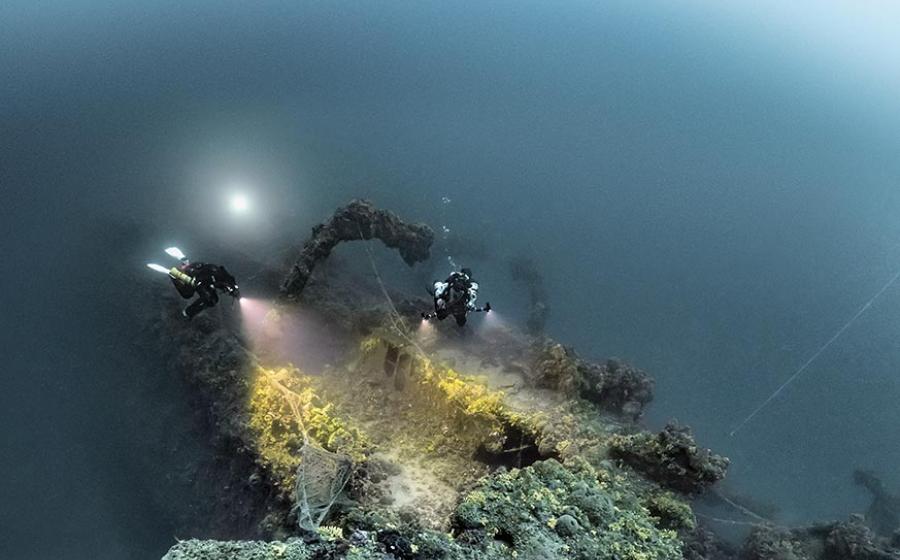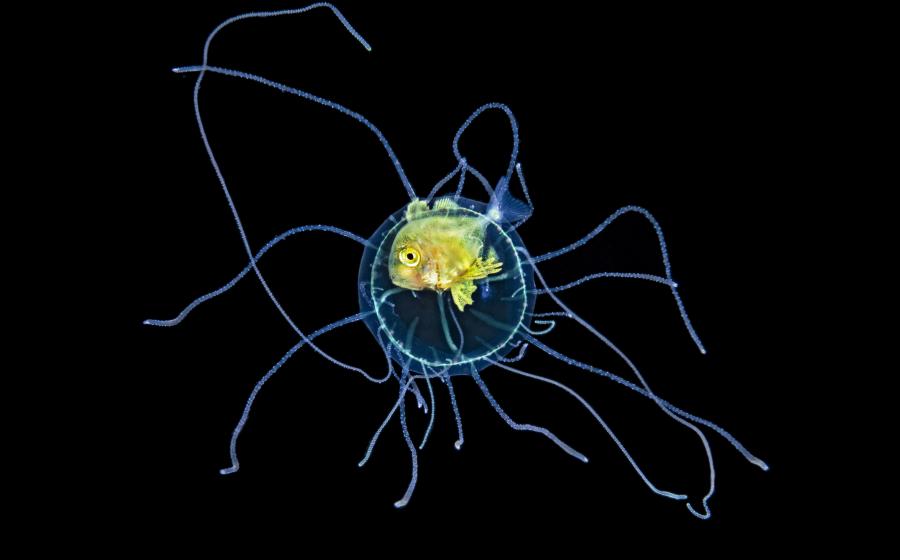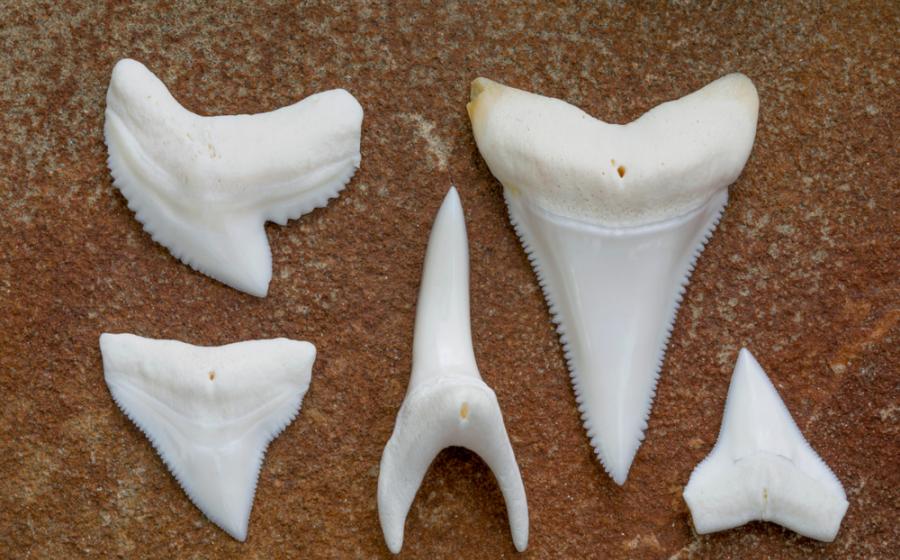California Diver: Birth of a Salp
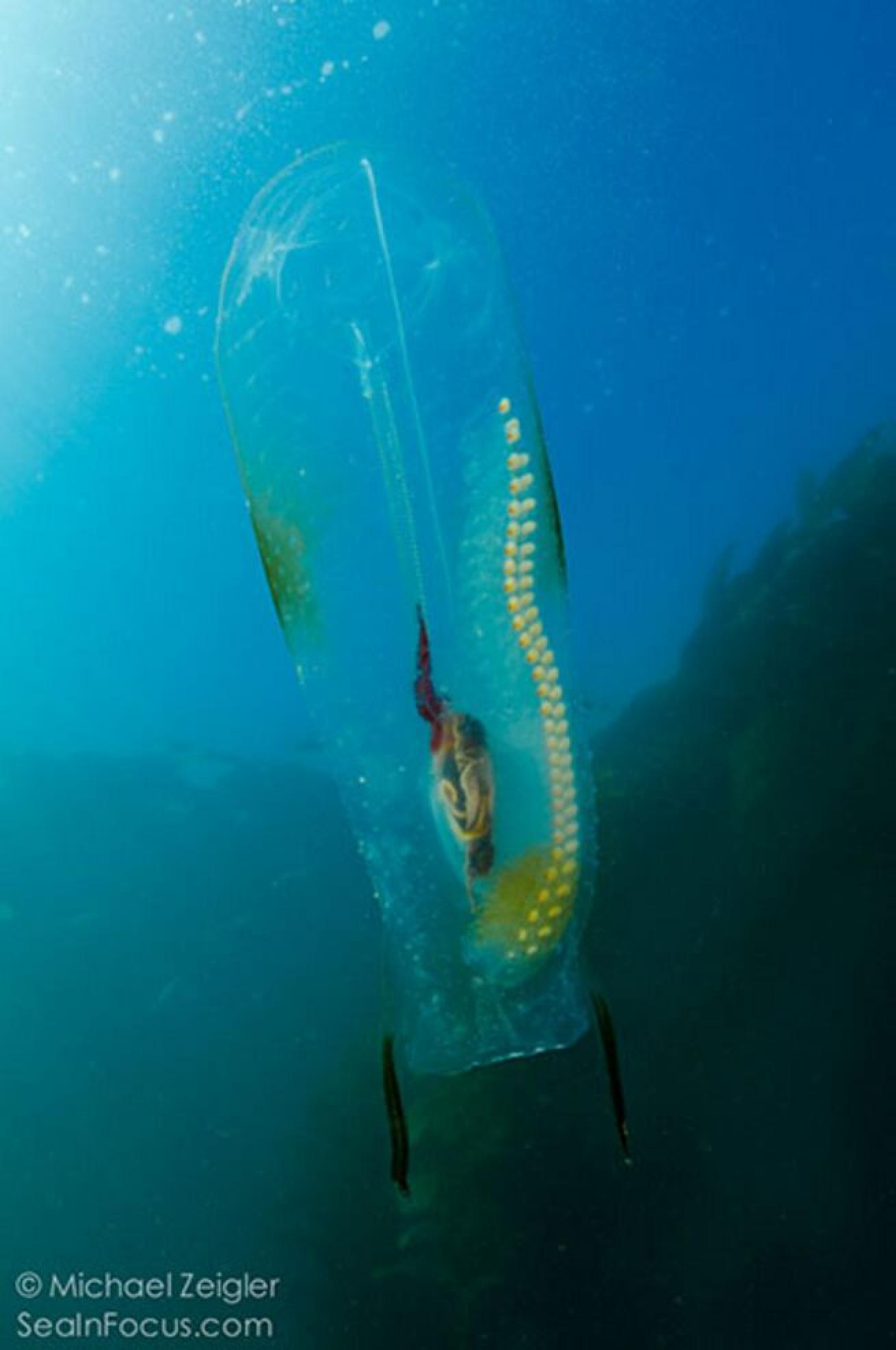
Michael ZeiglerSolo Salp
Solo Salp
A solitary salp, Thetys vagina, drifting against the edge of the kelp forest at Shaw's Cove in Laguna Beach, California. Its next generation, an aggregate chain, can be seen along its right side.
Related Reading: Exploring the Falkland Islands' Flourishing Kelp Forests
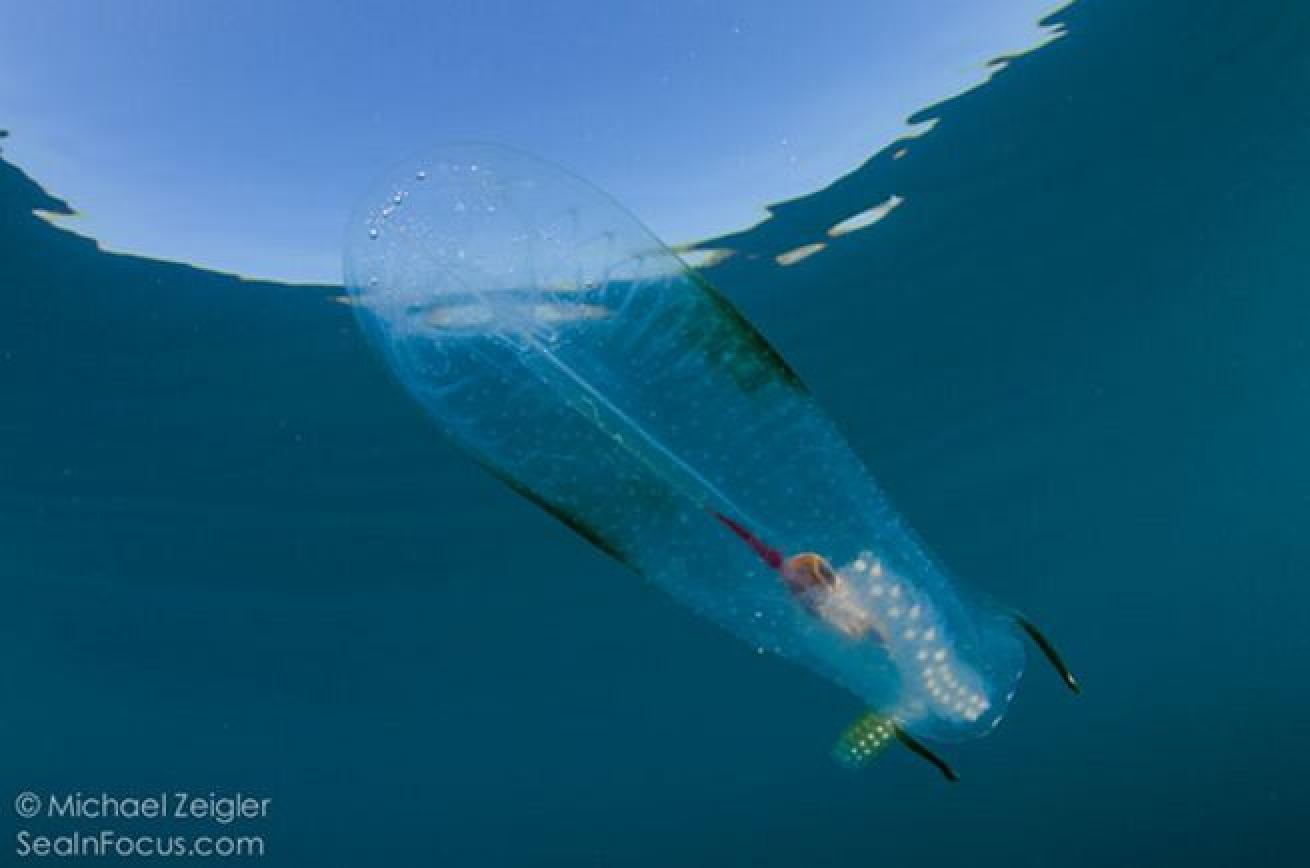
Michael ZeiglerSurprise
Surprise
As the salp neared the surface, I noticed that it suddenly began releasing the aggregate chain right before my very eyes!
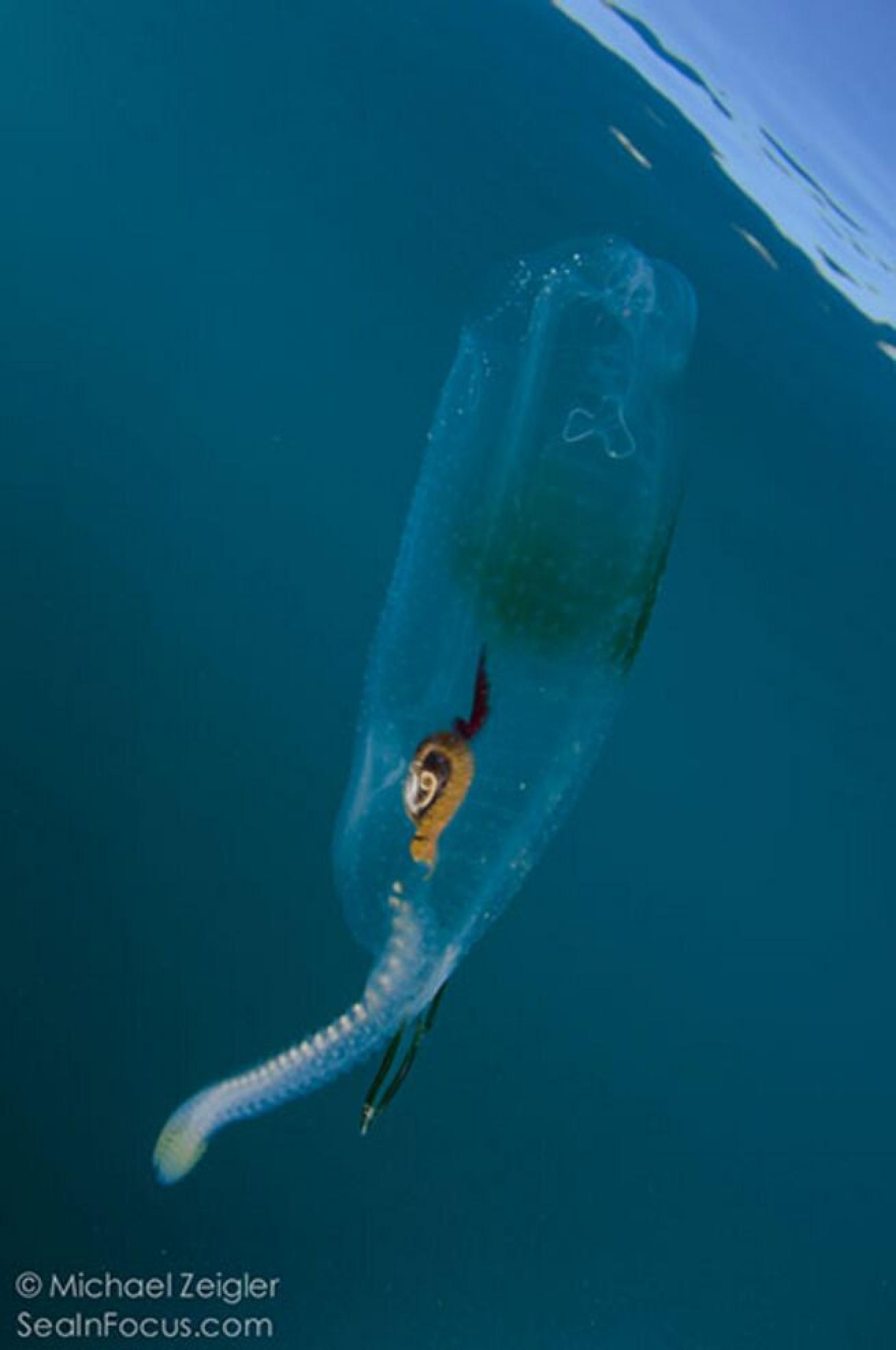
Michael ZeiglerThe Squeeze
The Squeeze
Almost there! The solitary salp has just about completed its release of the aggregate chain of tiny Thetys vagina salps. This was so amazingly cool to witness.
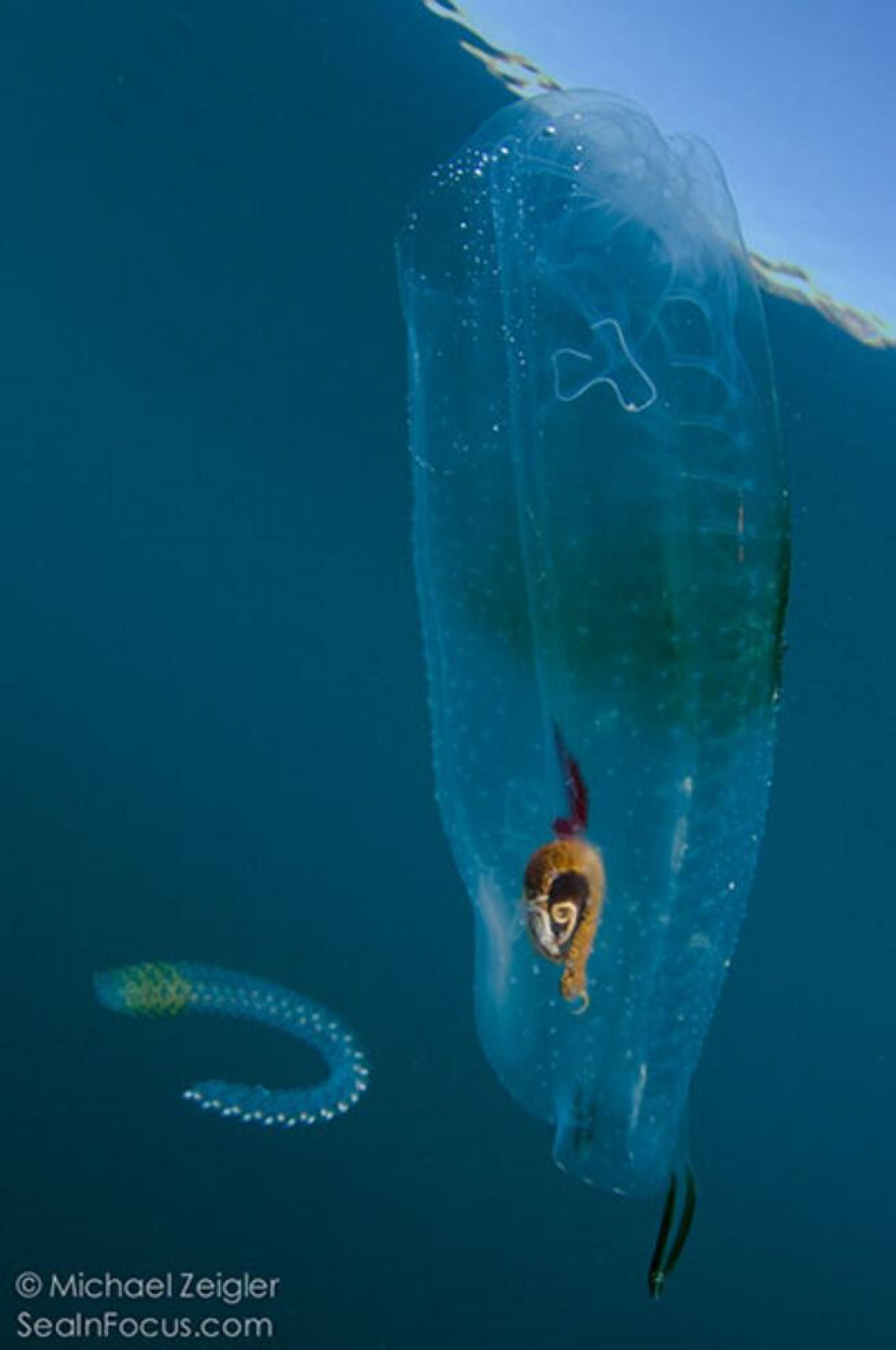
Michael ZeiglerSuccess!
Success!
Parent and offspring have now completely separated. Roughly eight inches in length, the newly released aggregate chain of Thetys vagina floats gently toward the sea floor. These will eventually grow in unison, then separate into the solitary form (up to 12 inches in length), and begin the process all over again.
Witnessing awesome animal behaviors under water is one thing; being able to capture them on a memory card to share with those above the surface is even better. I was recently lucky enough to be in the right place at the right time, in order to capture one of the coolest things I’ve ever seen take place under water; the beginning of a new generation of salps.
To be specific, I witnessed the release of an aggregate chain of salps from the solitary form of Thetys vagina. This relatively uncommon pelagic tunicate, in its solitary form, can grow to about a foot in length.
Related Reading: How to Photograph Pelagic Sharks
I was shore diving at Shaw’s Cove, a well-known site off the coast of Laguna Beach, California. Following the shallow reef to deeper waters, the visibility became subpar, so I started to ascend in search of better light. As I neared the edge of the kelp forest I looked up, and there it was. This was only the second time in over 500 dives that I had seen a Thetys vagina salp. Awesome! At this point I was basically at the surface when I started photographing this uncommon specimen. After several minutes I noticed something incredible. Right before my very eyes, this salp began to release a chain of “offspring” into the water column. I frantically began recomposing my shots in order to capture this rare event the best I could.
I left the water that day feeling completely energized, knowing that I had witnessed, and captured, something very special.
Originally from Detroit, Michigan, Michael Zeigler has lived in southern California since 1996, and has been scuba diving since 2004. Although he has been diving in many places around the world, he prefers capturing the beauty of the diverse marine life that inhabits the rich kelp forests of southern California. A proud member of the Ocean Artists Society, Michael also teaches underwater photography, leads underwater photo workshops, and is an AAUS Scientific Diver. He shoots with a Nikon D7000, Sea & Sea housing, and Ikelite DS-160 strobes. To see more of his work, visit SeaInFocus.com.








